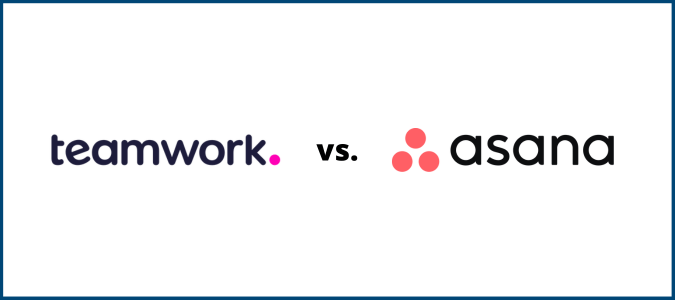LiquidPlanner is one of a long list of project management tools on the market. It separates itself from the pack by emphasizing making scheduling easier for businesses through its predictive scheduling feature. However, its time tracking, data customization, and task management features keep LiquidPlanner well-rounded among competitors.

LiquidPlanner Compared to the Best Project Management Software
While LiquidPlanner is a solid platform and excels at automated scheduling, it didn’t make our top list of project management software tools, primarily because it is more complex to learn and more limited in collaboration options than most. The following Golden Eggs are our top recommendations for project management software out of the dozens we researched.
Monday.com is our top pick for most because of its customizability and full-featured functionality. Get started with a free-forever plan.
ClickUp offers several benefits for remote workers, such as an adaptable workflow and collaborative chats and whiteboards. Try the free forever plan to see if ClickUp is right for you.
Smartsheet is an excellent choice for teams that prioritize automation and affordability. Save money on a plan by choosing an annual subscription.
LiquidPlanner: The Good and the Bad
Project management software ranges from simple to complex, making some tools better for specific needs than others. Here, we break down the areas in which LiquidPlanner shines, as well as a few drawbacks that may not make it an ideal solution for some companies and teams.
What LiquidPlanner Is Good At
LiquidPlanner is a high-tech tool emphasizing automation to help your company complete projects successfully. Here are its top assets that set it apart from its competitors.
Automated and intuitive scheduling: A coveted feature LiquidPlanner offers is its predictive scheduling, which takes over mundane scheduling tasks for teams. When you input projects and team members into the scheduler, the tool automatically creates a plan for the project based on how much time you expect each task to take.
Using this information, LiquidPlanner will also make sure that each team member involved with the project has a schedule that makes sense. It uses the team member’s current schedule and the estimated timeframe for their tasks to create a workable, realistic schedule for everyone involved. A project manager can view everyone’s bandwidth, too, and make adjustments as needed.
High level of customization: LiquidPlanner makes workflows entirely customizable. In fact, it has such intricate customization available for workflows, task management, and scheduling that the tool can easily become overwhelming for teams that only want simplicity. However, for projects requiring this higher level of customization, LiquidPlanner hits a sweet spot.
For example, LiquidPlanner lets administrators choose various access levels for each team member, including project observer and project editor, along with allowable tasks for each. Workspaces, rate sheets, scheduling, and reporting are also completely customizable to fit your project’s needs.
Detailed data reporting: Collecting and displaying data for projects is a notable strength of LiquidPlanner, even though there may be a learning curve to customize reporting initially. However, each project starts with an automated dashboard that project managers can tweak to suit the needs of the project and the most important data. Project managers can also create custom data fields to collect information they need that may not be default options in the system.
Reporting overviews are made possible by LiquidPlanner’s Grid view, which provides a list of all projects with a scroll-through grid of their associated metrics. Here, find pertinent information like estimated time to completion, outsourcing information, and revenue impact for each project.
Time management: One of the key components of LiquidPlanner’s predictive scheduling is time tracking, which this project management tool excels at. Time-tracking features within the software keep projects on schedule and prevent costly mistakes in scheduling that could result in missed deadlines or incomplete projects.
Admins can budget for project time by looking back at how long specific tasks took in past projects. Then, they can adjust accordingly with cost codes and custom rate sheets. As team members make progress with tasks, the time management tool automatically adjusts the estimated timeframe and related schedules.
Risk management: LiquidPlanner’s real-time insights can reduce risk throughout a project. Say, for example, one task is moving slower than projected. LiquidPlanner tracks this and alerts project managers as soon as it detects a bottleneck, allowing for quick administrative decision-making.
These alerts can also come in handy to monitor team member productivity or see what current conflicts could cause problems with other tasks planned for the future.
Free plan for small businesses: For small projects and teams, LiquidPlanner’s free plan might do the trick. It limits you to three people, 10 projects, and 300 tasks, which is certainly not enough for multi-project companies. However, for teams working on one must-track project at a time, it could provide just enough help.
A bonus is that the free plan easily transfers to any paid plan at any time. The free plan includes Essentials features, like Slack integration and predictive scheduling, but you can upgrade to Essentials, Professional, or Ultimate if your needs expand enough to use more of the tool’s resources.
What LiquidPlanner Is Lacking
LiquidPlanner’s greatest weakness is its steep learning curve, which shows up in various aspects of the tool. From its complicated project setup to its lack of mobile-friendliness, it may add more challenges to teams with novice-level technical skills.
High-than-average learning curve: Setting up LiquidPlanner is much more complex than other tools, such as Monday.com or ClickUp. LiquidPlanner offers a lot of customization capabilities, but it comes with the price of being overwhelming for smaller teams or non-technical users.
If you do need LiquidPlanner’s advanced features and high flexibility, be sure to have a technical team on your side for support. Setting up the tool to perform as reliably as needed can take a great deal of time and skill alone. There is a comprehensive onboarding process included, but it still may not be enough to really dive into the tool.
Crowded dashboard: Compared to other project management tools, LiquidPlanner’s dashboard may appear confusing and cluttered to some users. There are many settings available to customize the dashboard into a more streamlined version for specific users who don’t need as much information on their screens as others.
As a result, the visual layout of LiquidPlanner can be a lot to take in. The user interface could even feel a little outdated, which might be a drawback for people who prefer a more modern look and feel for their tools.
Mobile accessibility is clunky: LiquidPlanner does not yet offer a dedicated mobile app to access its tool on a smartphone or tablet. Although much of the work teams do on project management tools is on a computer or laptop, mobile accessibility is a necessity in today’s remote and on-the-go workforce.
You can certainly navigate to LiquidPlanner from your phone’s mobile browser. However, doing so provides a different experience than a mobile app would. Some parts of tasks may get cut off in mobile view, as can other areas of the dashboard, reports, and tools, making it challenging to see everything you need to.
Limited collaborative tools: LiquidPlanner is less robust than other products with collaborative features. For example, ClickUp has several ways for teams to collaborate, including whiteboards, chats, team goal-setting, and human resources management.
LiquidPlanner is limited to file sharing and task comments, which could hinder productivity in companies with hybrid or remote teams.
LiquidPlanner Options and Pricing
LiquidPlanner offers its primary project management software for companies of all sizes. Business owners can also add professional services to its regular software for extra assistance with onboarding, training, workflow management, and more.
LiquidPlanner Project Management Software

LiquidPlanner Project Management Software is probably what you came here to learn about. This tool is where you’ll find all the project management features needed to oversee your projects, from scheduling and project estimates to people management and task organization.
Small to large businesses can use LiquidPlanner to keep team members on task and projects on track. It’s especially useful for large organizations with multiple projects at a time, as project managers can rank projects from low to high priority and view the status of each in a single page view.
LiquidPlanner Project Management Software is available in three paid plans, in addition to a free plan that uses Essentials features but limits tasks and users:
- Essentials: $15 per user per month, billed annually
- Professional: $25 per user per month, billed annually
- Ultimate: $35 per user per month, billed annually
LiquidPlanner Professional Services

We stated that LiquidPlanner’s biggest drawback is its complexity in setting up workflows and using the tool. However, companies that need help with these tasks can use LiquidPlanner Professional Services to get personalized assistance from a team of experts.
These services can include guided onboarding, professional workspace setup, consultations, and even in-person training. If you have a large team to catch up to speed on learning this new system, LiquidPlanner’s Professional Services are essential.
Pricing for these services is customized to your needs, so you won’t find preset packages to choose from. Instead, you’ll need to contact the LiquidPlanner sales team for a quote.
LiquidPlanner in Summary
LiquidPlanner isn’t one of the most recognizable names in project management software, but that’s likely because it’s not as fitting for most businesses as some options might be. Its high level of customization is great but comes with more complexity, which can be cumbersome for small to medium-sized companies.
However, LiquidPlanner’s predictive scheduling is a stand-out feature that could benefit teams looking for a flexible, automated scheduling solution that takes the guesswork out of time management.
Still, most businesses may prefer a tool like Monday.com, which has an intuitive and modern interface with tons of customization. ClickUp is another excellent solution, especially for remote teams, thanks to its collaborative features. And Smartsheet is one of the most affordable project management tools that doesn’t sacrifice functionality.















